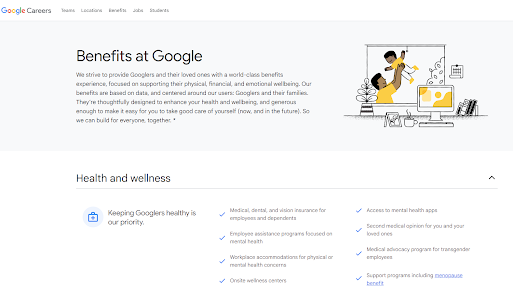In today's fast-paced world, where employees spend a significant portion of their day at work, maintaining health and wellness in the workplace has become crucial. Worksite Health Promotion (WHP) is an evolving trend that aims to improve employee health, enhance productivity, and create a positive work environment. In today's article, lets explore the concept of Worksite Health Promotion, its benefits, strategies for successful implementation, and future prospects of this growing trend.
What is Worksite Health Promotion?
Worksite Health Promotion involves the integration of health and wellness activities within the workplace to improve the overall health of employees. These activities can range from physical fitness programs and mental health support to nutritional guidance and stress management workshops. The goal is to create a healthier and more productive workforce by addressing various aspects of employee well-being.
Why is Worksite Health Promotion important?
According to a publication by the Centre for Diseases Control(CDC), Worksite Health Promotion is essential for several reasons:
- Improved Employee Health: Regular health promotion activities can reduce the risk of chronic diseases, enhance mental health, and promote overall well-being.
- Increased Productivity: Healthy employees are more productive, focused, and motivated. They take fewer sick days and perform better in their roles.
- Reduced Healthcare Costs: Promoting health at work can lead to lower healthcare expenses for both employees and employers by preventing illnesses and reducing the need for medical treatments.
- Enhanced Employee Morale: A workplace that prioritizes health and wellness fosters a positive and supportive environment, leading to higher job satisfaction and employee retention.
How can companies implement Worksite Health Promotion effectively?
Successful implementation of Worksite Health Promotion requires a strategic approach. The European Agency for Safety and Health at Work issued this publication titled 'Workplace Health Promotion for Employees and some key strategies that can be followed in implementing WHP include:
Assessing Employee Needs
Conducting a Health Needs Assessment
Understanding the specific health needs of employees is the first step in developing an effective WHP program. This can be done through surveys, focus groups, and health risk assessments. Gathering data on employee health status, lifestyle habits, and wellness interests helps in tailoring the program to meet their needs.
Developing a Comprehensive Wellness Program
Components of a Wellness Program
A well-rounded wellness program should address multiple dimensions of health, including physical, mental, and emotional well-being. Key components may include:
Physical Fitness: Onsite fitness classes, gym memberships, or organized sports activities.
Mental Health Support: Access to counseling services, stress management workshops, and mindfulness training.
Nutritional Guidance: Healthy eating workshops, nutritious cafeteria options, and nutrition counseling.
Health Screenings: Regular health check-ups, biometric screenings, and flu vaccination clinics.
Work-Life Balance: Flexible work hours, remote work options, and time management training.
Creating a Supportive Environment
Fostering a Culture of Health
For WHP to be successful, it must be integrated into the company culture. This involves:
Leadership Support: Leaders should actively participate in wellness initiatives and promote a healthy work culture.
Employee Engagement: Encouraging employees to take part in wellness activities and providing incentives for participation.
Healthy Work Environment: Creating spaces for relaxation, offering healthy food options, and ensuring ergonomic workstations.
Providing Resources and Support
Access to Health Resources
Employees should have easy access to resources that support their health and wellness goals. This can include:
Health Education Materials: Pamphlets, newsletters, and online resources on various health topics.
Wellness Programs: Access to fitness centers, health coaching, and wellness challenges.
Employee Assistance Programs (EAPs): Services that provide confidential counseling and support for personal or work-related issues.
Monitoring and Evaluation
Evaluating Program Effectiveness
Regularly assessing the impact of the wellness program is crucial for continuous improvement. This can be done through:
Feedback Surveys: Collecting employee feedback on the program's effectiveness and areas for improvement.
Health Metrics: Tracking changes in employee health metrics, such as reduced absenteeism, lower healthcare costs, and improved health outcomes.
Participation Rates: Monitoring employee participation rates in wellness activities to gauge engagement.
What are the benefits of Worksite Health Promotion?
Worksite Health Promotion offers numerous benefits for both employees and employers:
For Employees
Improved Physical Health: Regular physical activities and health screenings help employees maintain better physical health.
Enhanced Mental Well-being: Access to mental health resources and stress management techniques can reduce anxiety and improve emotional health.
Better Work-Life Balance: Flexible work options and wellness programs help employees balance their personal and professional lives.
Increased Job Satisfaction: A supportive work environment and a focus on employee well-being lead to higher job satisfaction.
For Employers
Increased Productivity: Healthy employees are more focused, motivated, and productive.
Reduced Absenteeism: Healthier employees take fewer sick days, leading to improved attendance.
Lower Healthcare Costs: Preventative health measures reduce the need for costly medical treatments.
Enhanced Employee Retention: A positive and healthy work environment leads to higher employee retention rates.
The Role of Technology in Worksite Health Promotion
Health Apps and Wearables
Technology plays a significant role in modern worksite health promotion. Health apps and wearable devices can track physical activity, monitor vital signs, and provide personalized health recommendations. These tools can help employees stay motivated and engaged in their health journey.
Online Wellness Platforms
Online wellness platforms offer a convenient way for employees to access health resources and participate in wellness programs. These platforms can include virtual fitness classes, health assessments, and wellness challenges. Providing online resources ensures that employees can engage in health promotion activities at their convenience. Learn about how Aussi is an important platform in health promotion here.
Telehealth Services
Telehealth services have become increasingly popular, especially in the wake of the COVID-19 pandemic. These services allow employees to consult with healthcare professionals remotely, making it easier to access medical advice and support. Incorporating telehealth into worksite health promotion programs can enhance accessibility and convenience for employees. Here are ten telehealth examples that give a glimpse into the future of healthcare delivery – showing how telehealth can not only deliver a more convenient experience to staff and patients, but also extend the reach of care to those who may have trouble accessing it.
Examples of Successful Worksite Health Promotion Programs
MaishaFiti by Aussi
At Aussi Outdoor Products, we are proud to offer the MaishaFiti by Aussi program. This initiative includes wellness workshops, fitness retreats, and corporate wellness programs designed to enhance employee health and well-being. Our holistic approach ensures that employees have access to the resources and support they need to lead healthier lives.
Wellness Workshops & Seminars
Our wellness workshops and seminars cover a wide range of topics, from nutrition and fitness to mental health and stress management. These sessions provide employees with valuable information and practical tips to improve their overall health.
Fitness Retreats & Adventure Trips
Our fitness retreats and adventure trips offer employees the opportunity to engage in physical activities and explore the great outdoors. These experiences not only promote physical fitness but also foster team building and a sense of community.
Corporate Wellness Programs
Our corporate wellness programs are tailored to meet the specific needs of our clients. We work closely with businesses to develop comprehensive wellness initiatives that include fitness activities, health education, and stress management strategies.
Other Notable Examples
Google's Wellness Program
Google is renowned for its comprehensive wellness programs, which include onsite fitness centers, nutritious meals, mental health support, and wellness workshops. The company's holistic approach to employee well-being has contributed to its reputation as a top employer, high levels of employee satisfaction and productivity.
Johnson & Johnson's Live for Life Program
Johnson & Johnson's "Live for Life" program focuses on physical fitness, stress management, and healthy eating. The program offers employees access to fitness centers, health coaching, and wellness challenges. The company has seen significant improvements in employee health, productivity and reductions in healthcare costs.
Challenges and Solutions in Worksite Health Promotion
So, what are the challenges in implementing Worksite Health Promotion, and how can they be addressed? Lets explore a little bit:
Challenges
Lack of Employee Engagement: Employees may be reluctant to participate in wellness programs due to time constraints or lack of interest.
Limited Resources: Smaller companies may have limited resources to invest in comprehensive wellness programs.
Sustaining Motivation: Maintaining long-term engagement and motivation for wellness activities can be challenging.
Solutions
Tailored Programs: Customizing wellness programs to meet the specific needs and interests of employees can increase engagement.
Cost-Effective Initiatives: Implementing low-cost wellness initiatives, such as walking groups or online health resources, can be effective for smaller companies.
Incentives and Recognition: Offering incentives for participation and recognizing employees' wellness achievements can sustain motivation.
The Future of Worksite Health Promotion
Increased Focus on Mental Health
The future of worksite health promotion will likely see an increased focus on mental health. As awareness of mental health issues continues to grow, companies will need to implement comprehensive programs that address both physical and mental well-being. Read our previous article about how exercise can be used for mental wellbeing here.
Integration of Technology
As it is with the whole fitness industry, technology will continue to play a significant role in worksite health promotion. Advances in health apps, wearable devices, and telehealth services will provide new opportunities for promoting employee health and wellness. Read more about the role of technology in fitness here and here.
Personalized Wellness Programs
Personalization will be a key trend in the future of worksite health promotion. Companies will increasingly use data and analytics to create customized wellness programs that meet the unique needs of each employee. This personalized approach can lead to better health outcomes and higher levels of engagement.
Collaboration with External Providers
Collaboration with external providers, such as fitness and wellness companies like Aussi, will become more common. Partnering with experts in the field can provide access to specialized knowledge and resources, enhancing the effectiveness of worksite health promotion programs.
What to Take Home Today?
Worksite Health Promotion is a powerful trend that enhances workplace wellness by addressing various aspects of employee health. By implementing effective wellness programs, companies can improve employee health, increase productivity, and create a positive work environment. As more organizations recognize the importance of WHP, the future of workplace wellness looks promising. At Aussi, we are committed to supporting businesses in their journey towards better workplace health. Through our MaishaFiti by Aussi program, we offer a range of services, including wellness workshops, fitness retreats, and corporate wellness programs, designed to enhance employee health and well-being.
Investing in worksite health promotion is not just a smart business decision; it's a commitment to creating a better future for employees and employers alike. Start embracing the trend of worksite health promotion and discover the transformative benefits it can bring to your organization today.


.jpg)







Comments
Post a Comment